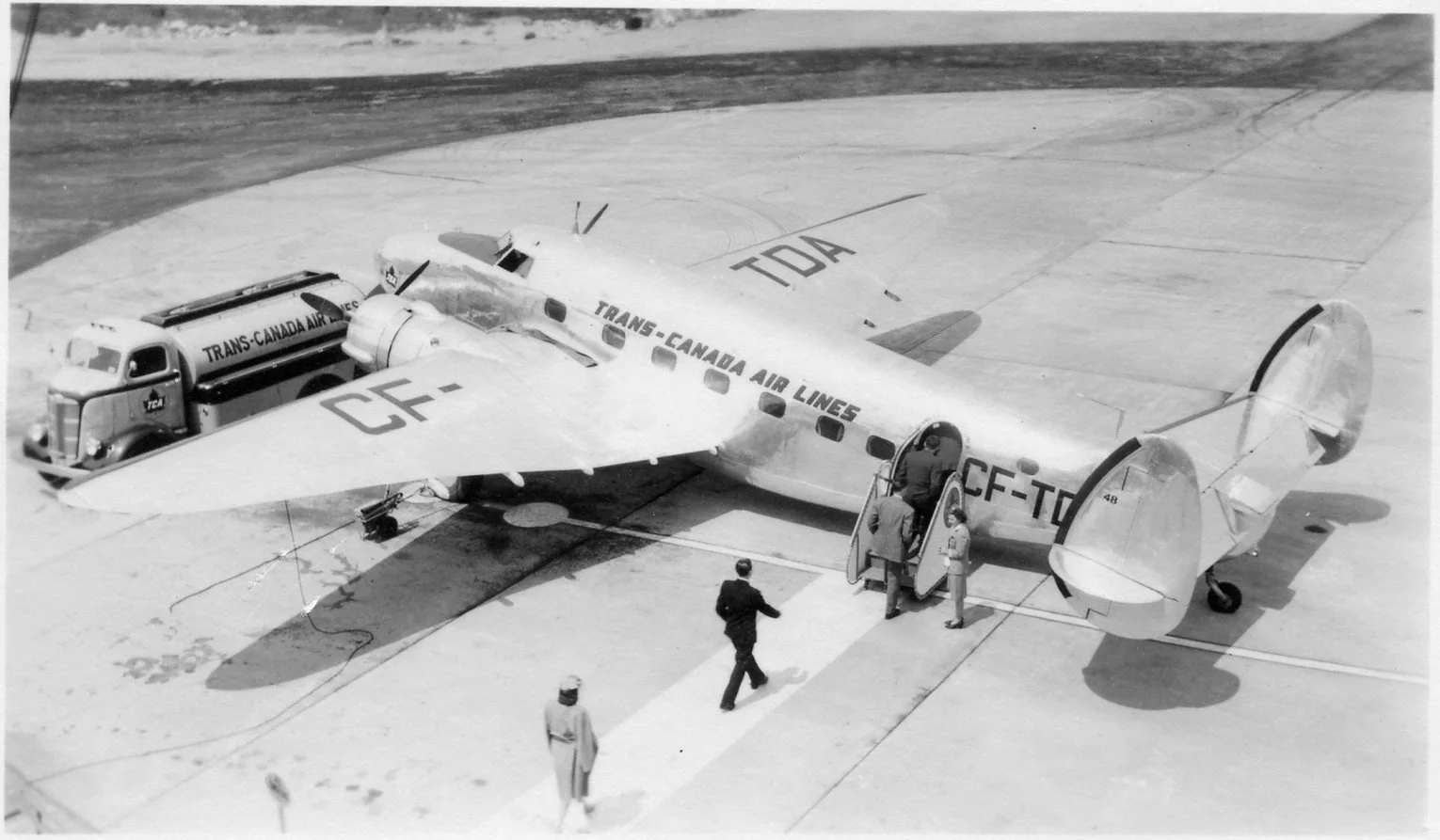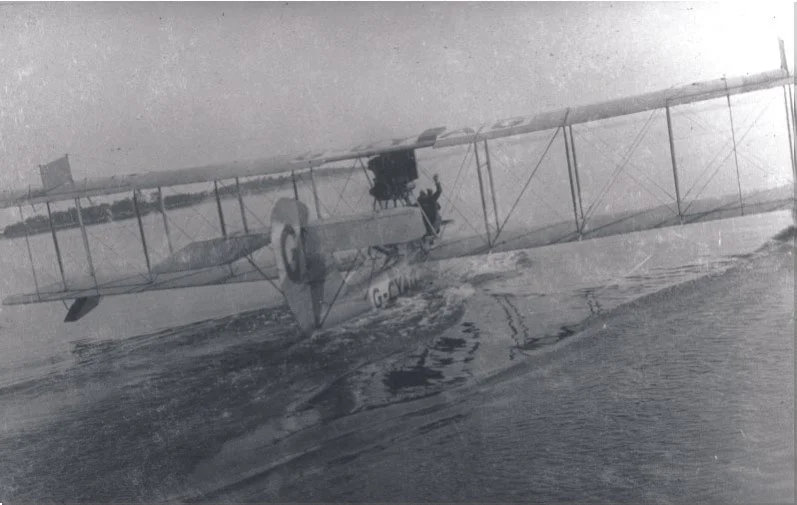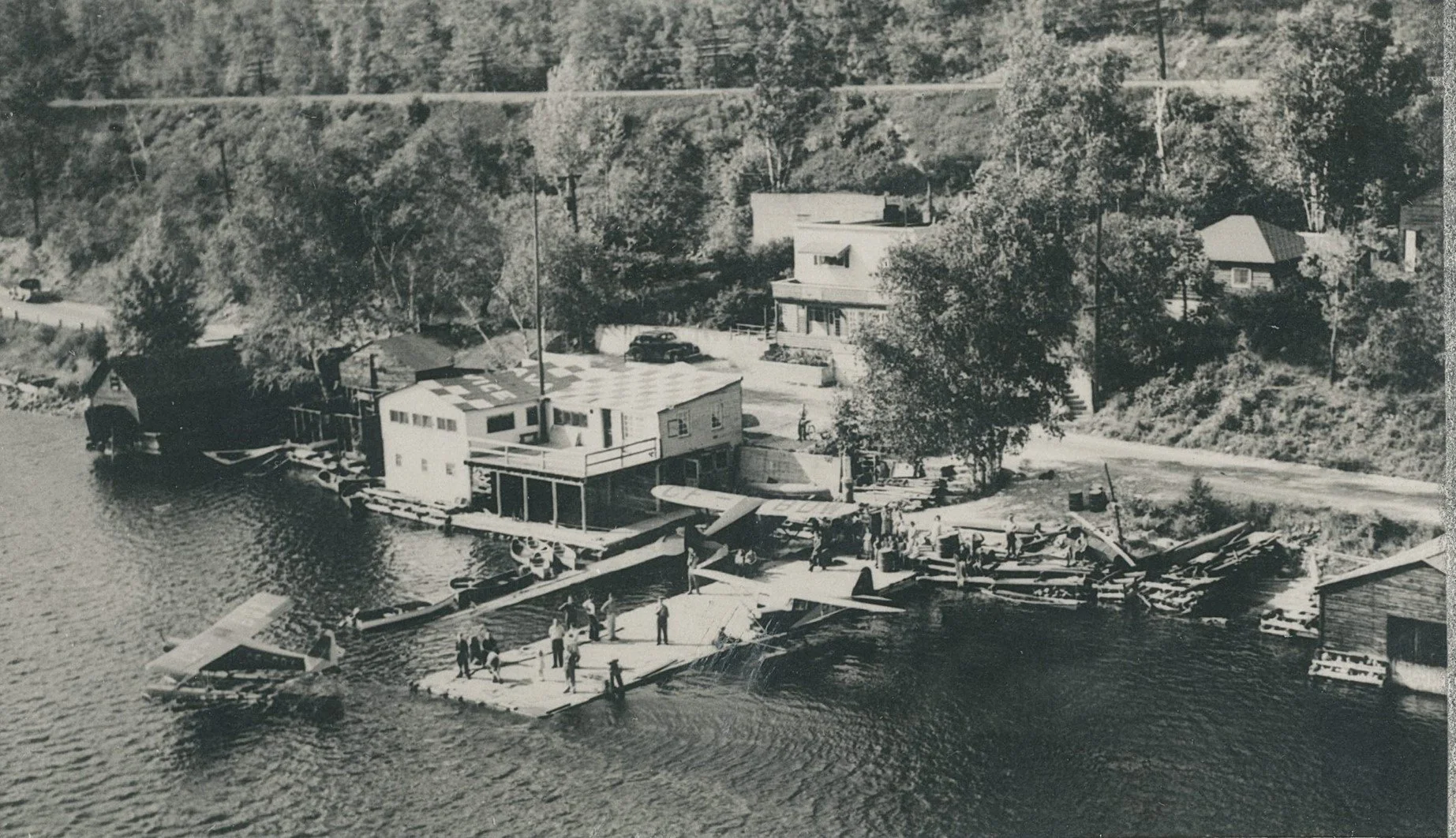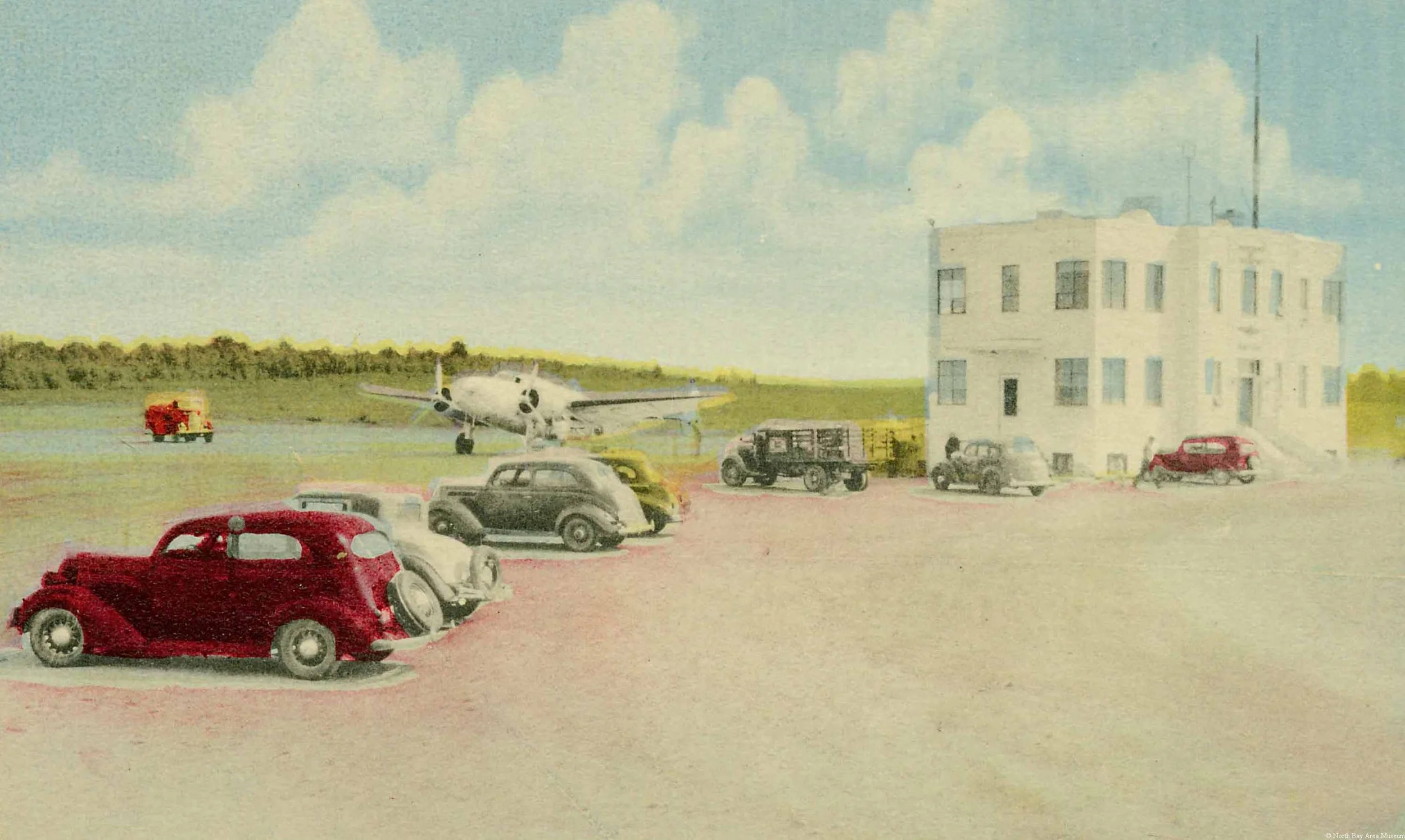North Bay Airport
THE AIRPLANE CROSSROADS OF CANADA
Passengers boarding a Trans-Canada Lockheed Lodestar
North Bay Museum Collection
In 1921, just 18 years after the Wright Brother’ famous flight, North Bay became the airplane crossroads of Canada.
On missions ranging from military to fighting forest fires to exploration, aviators were flying north to the Arctic, west to the Prairies and the coast, east to Quebec and the Maritimes and to southern Ontario and the U.S. They passed through North Bay to refuel and obtain supplies, and shop, eat and rest. At first, flying planes specially designed to operate on water landed and took off from Lake Nipissing.
The HS-2L G-CYAG on Lake Nipissing
Visible behind this aquatic aircraft is North Bay’s downtown and the CPR Railyards. A large model of this airplane hangs at the North Bay Museum entrance.
North Bay Museum Collection
By 1923, so many flights came that North Bay established an air harbour (North Bay’s first airport) on Trout Lake, near Average Joe’s restaurant. But this facility was unable to handle land planes, and was unusable half the year due to lake ice.
Despite its limitations, the Trout Lake Air Harbour soldiered on for 100 years, closing in 2023 and was the longest continuously operating air station of any kind in Canada.
A busy day at the Trout Lake Air Harbour, c.1941
North Bay Museum Collection
In 1938, a new ground airport was built seven kilometres northeast of the city. Not only was it able to operate year-round, it was the second largest airport in Ontario, after Toronto’s.
Hand-coloured photo of North Bay airport, c.1939
At right is the airport terminal, which housed the administration offices and passenger waiting area. An airliner is being prepped, while a firefighting crew watches from their red truck.
North Bay Museum Collection
North Bay Airfield, Second World War, 1943
The small cube-shaped building (lower left) by the white circle is the airport terminal. The white-faced building to its right is the Trans-Canada Air Lines hangar.
All of the dark buildings and double hangar belong to Britain’s Royal Air Force, an extraordinary flying school that drew men from 23 countries of five continents.
Lake Nipissing is along the top of the image and the city lies along its fringe.
North Bay Museum Collection
No sooner had World War Two ended than Russia (then called the Soviet Union) threatened ignition of a Third World War—this time nuclear. This period of perennial tension became known as the Cold War.
Faced with the potential onslaught of Russian bombers, Canada began construction of a massive, nation-wide network of air defences. Part of this was a Royal Canadian Air Force fighter base at North Bay’s airport in the 1950s and a new jet terminal in 1963.
Changes to the Airport with the RCAF’s Arrival, 18 March 1953
Note the rank of RCAF fighters parked to the right of the terminal.
North Bay Museum Collection
Changes to the airport were staggering, involving two years of construction. New hangars, a fuel depot, fire station and control tower were built and land across the road was acquired for a wide variety of military facilities.
One change made North Bay special—the runway was lengthened to 10,000 feet! Thus the airport could handle any airplane, including NASA space shuttles. However, the civilian Department of Transport still ran the airport, with the RCAF a resident.
The new spacious, sophisticated terminal and facilities were constructed on the other side of the airfield. In 1966, the Airport was named the Jack Garland Airport, after the local Member of Parliament who died while in office.
The new Jet-age Air Terminal c.1964
North Bay Museum Collection
In 1992, with the end of the Cold War, the Department of National Defence transferred its airplanes and sold or demolished all the base’s airfield assets, making 22 Wing the only Air Force base in Canada not to have an airfield or aircraft.
The upgrades to the airport paid off. The European Company Airbus sent its A350-900 Flightlab from Toulouse, France. Weighing 280 tonnes, able to haul 440 passengers, it was a monster. Yet the airport handled the airliner as easily as if it were a light, local plane on a Sunday jaunt.
Visit of Airbus Flightlab Airliner, May 2024
Image courtesy of Bryan Avery, Jack Garland Airport Manager
Did You Know…
The North Bay airport was an emergency landing field for the NASA Space Shuttles during their flights from 1981 to 2011. That NASA entrusted its most advanced spacecraft to North Bay speaks to the reputation of our backwater airfield in the heart of Canada’s bear country
In the late 1930’s, all flight attendants had to be licensed registered nurses.
21st Century View
North Bay airport, 80 years after the Second World War. At the left, across the curving road, is 22 Wing/Canadian Forces Base.
In the distance, beyond the gray and green doored hangars lies the Jack Garland Airport passenger terminal, control tower, and administration building which runs the airfield.
The deep blue waters shown at the top of the picture are Lake Nipissing— where North Bay’s adventure in flying began over a century ago, in 1921, as the flying crossroads of Canada.
Image Courtesy of the City of North Bay
Remember When…
Wrote one awed airline traveler after North Bay’s airport opened: “The plane gleamed in the sun like a brand new dime. The men (passengers) were expected to wear a jacket and tie, the women a dress or skirt. On takeoff the engines snarled a wonderful tiger-ish growl that stirred the coffee in your stomach… it was an event”
As recorded by the 22 Wing Heritage Officer, Doug Newman
Jack Garland Airport in the 21st Century











